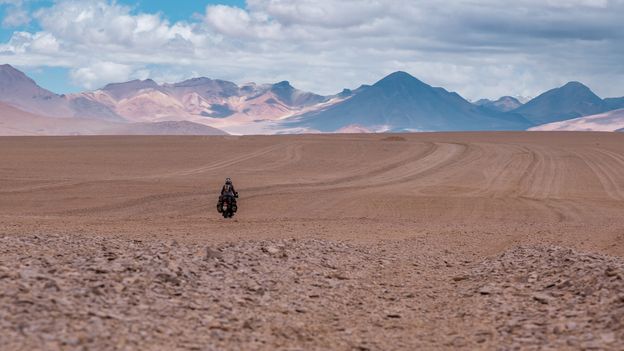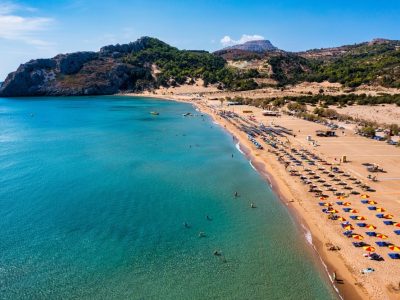The Lagunas Route was originally used by locals in pre-Columbian times to transport goods between villages and settlements via llama caravans. In the 1890s, mining companies began using it to transport silver, zinc and salt to Chile. Gutierrez explained that over the years, the route’s many natural wonders have become shrouded in legend. The blood-red Laguna Colorada, for instance, is said to have got its hue after being “touched by the devil”, and anyone who drinks its water will die. Another local story claims it changes from red to green if it senses invaders, “but these are just stories people tell”, Gutierrez said, smiling.
More like this:
• The US’ “floating” highway
• California’s spectacular alternative to Yosemite
• One of the most spectacular drives in Cuba
As I travelled across the Jara, I heard more legends about this desert landscape. One afternoon, weary of dark storm clouds gathering over the horizon, I camped near an abandoned village made from crumbling abode mud bricks. Thunder echoed across the desert through the night, and in the morning, I noticed a few inhabited clay-brick houses a short ride away over a narrow creek. Hoping to buy some food, I approached and spoke to a woman tending to her chickens and sheep. Two small boys peered curiously at me from the doorway.
“See that stream over there? It used to be a river, but it runs dry now. The spirit of the mountain is angry because our village hasn’t had a shaman for months now, and there’s no one to cut the children’s hair when they turn five anymore,” the woman, named Rocio, told me with a sigh as she wrapped several wedges of fresh cheese in a cloth for me.
After fuelling up in the tiny town of Villa Alota, my final two days on the Lagunas Route were a muddy, slippery slog, thanks to the recent thunderstorm. As the contours of Uyuni came into view, I was dog-tired, cold to the bone and longing for a hot shower and a hot meal – but still found myself wishing the journey wouldn’t end.










